Shifting Gears
When do you shift gears?
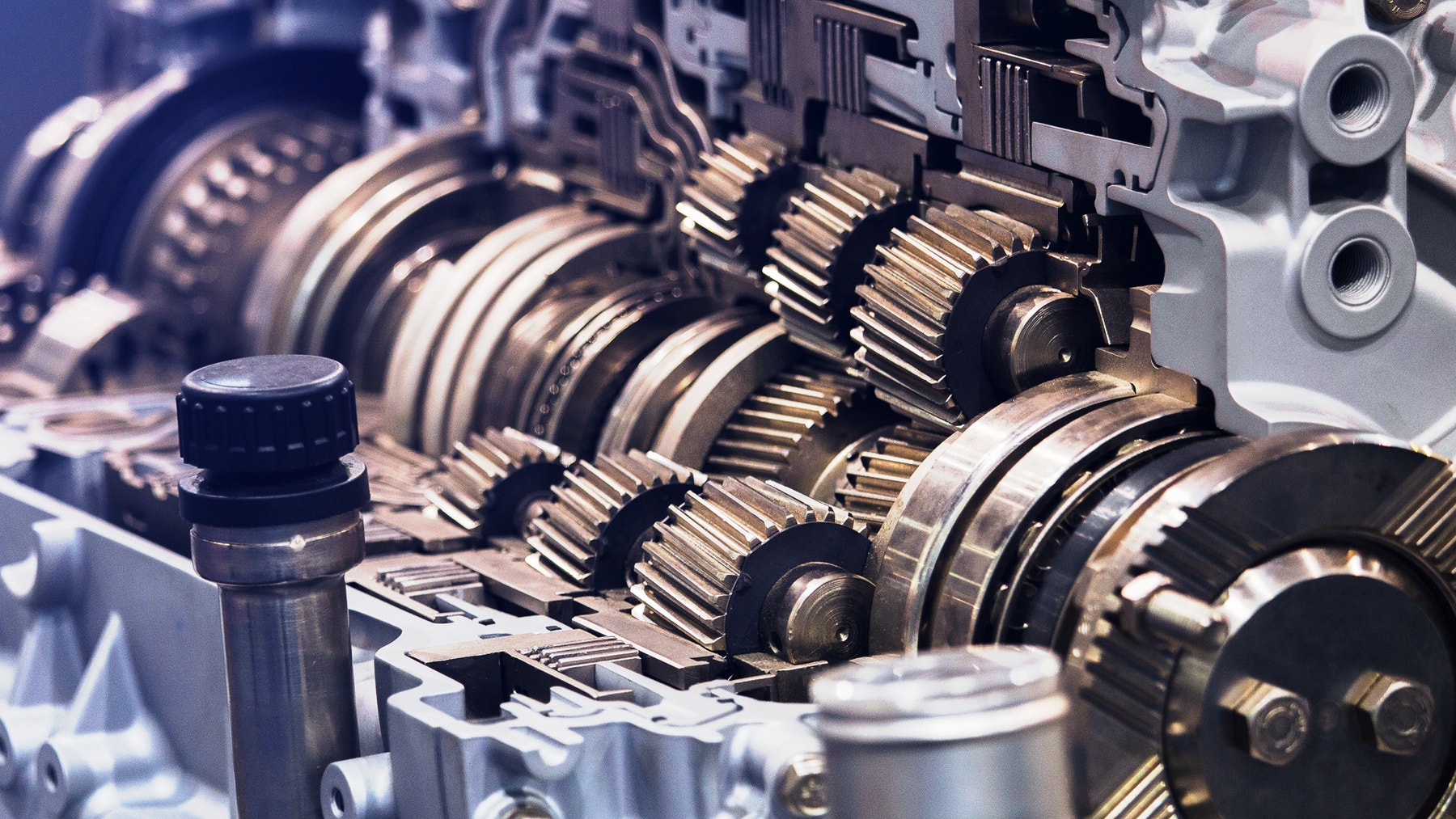
A gear system lets you adjust the driving force needed to move the driven wheel. When driving a vehicle, you start off in a low gear and then shift into higher gears at higher speeds.
In which situations is it useful to be able to shift gears up or down?
Build this *Geared Vehicle*.
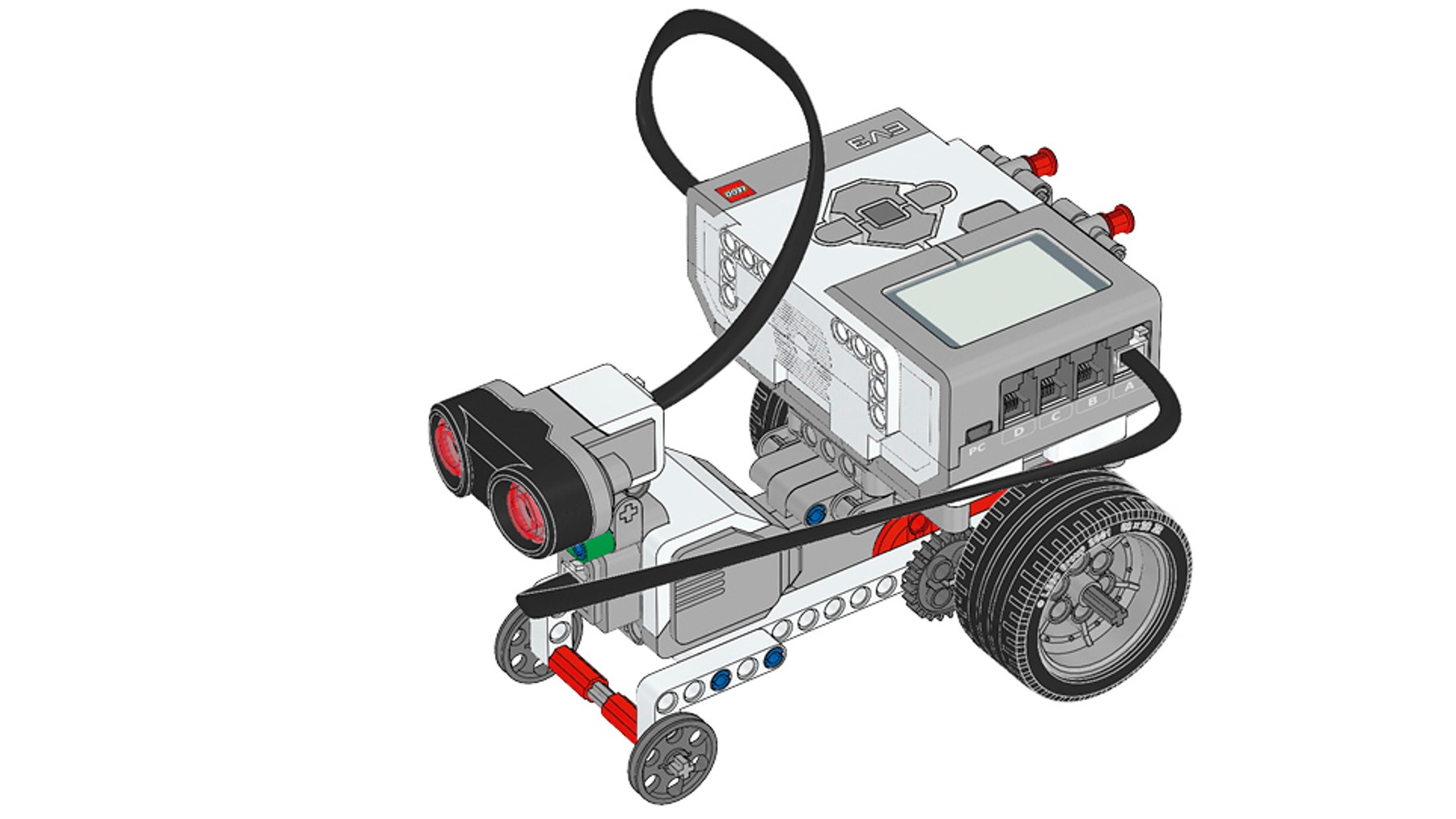
This vehicle has interchangeable gear trains, which let us see the effects of shifting gears!
Do a test run.

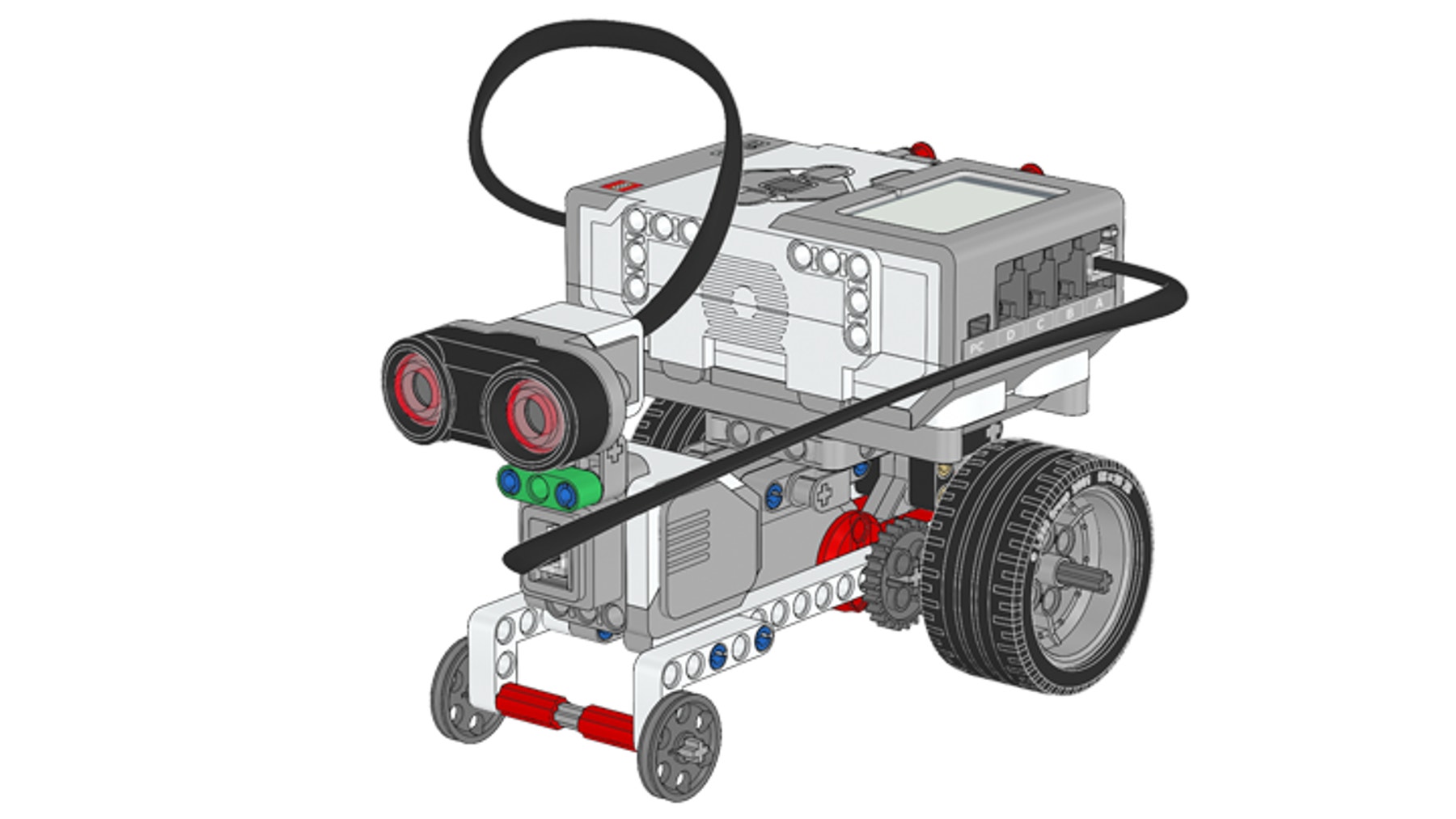
Place the model on a solid and level surface. Make sure that both the gear pointer and the reference motor pointer point upwards. Run the program and keep track of the gear pointer to count the number of rotations. Make sure to observe its turning direction.
Does the reference motor complete one rotation and do both motors stop turning at the same time?
Using the Ultrasonic Sensor
The Ultrasonic Sensor generates sound pulses, which form a sound cone in which objects can be detected. When starting the experiment, don’t stand next to the vehicle or within the Ultrasonic Sensor’s sensing cone; the best place is behind the Ultrasonic Sensor.
Record your results.

Record the experiment number, gear ratio, your prediction of what’ll happen, distance traveled, and velocity in a testing table. Make sure to leave enough space to record other observations.
Perform the experiment using the default gearing and repeat the experiment for each gear train option shown in the “Hint” below.
Running the Experiment
Keep the following tips in mind as you run your experiment:
- The distance traveled (in cm), velocity (in m/s), and rotational speed (in revolutions per second) will be shown on the Display.
- Perform the experiment at least three times for each gear train option and use the average values to ensure the most reliable results.
Shifting Gears
Remove the first default gear train:
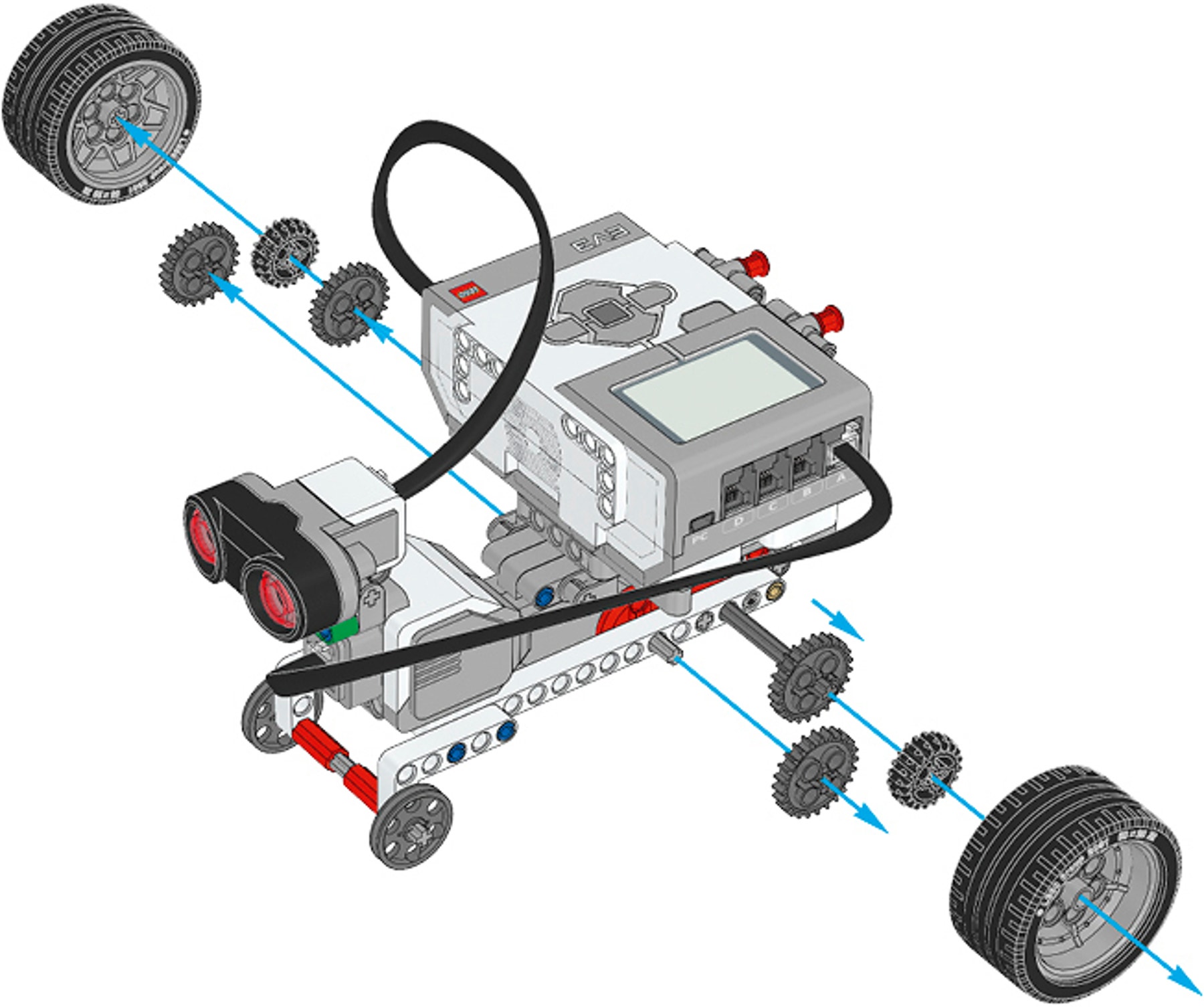
Build the second gear train using double bevel gears:
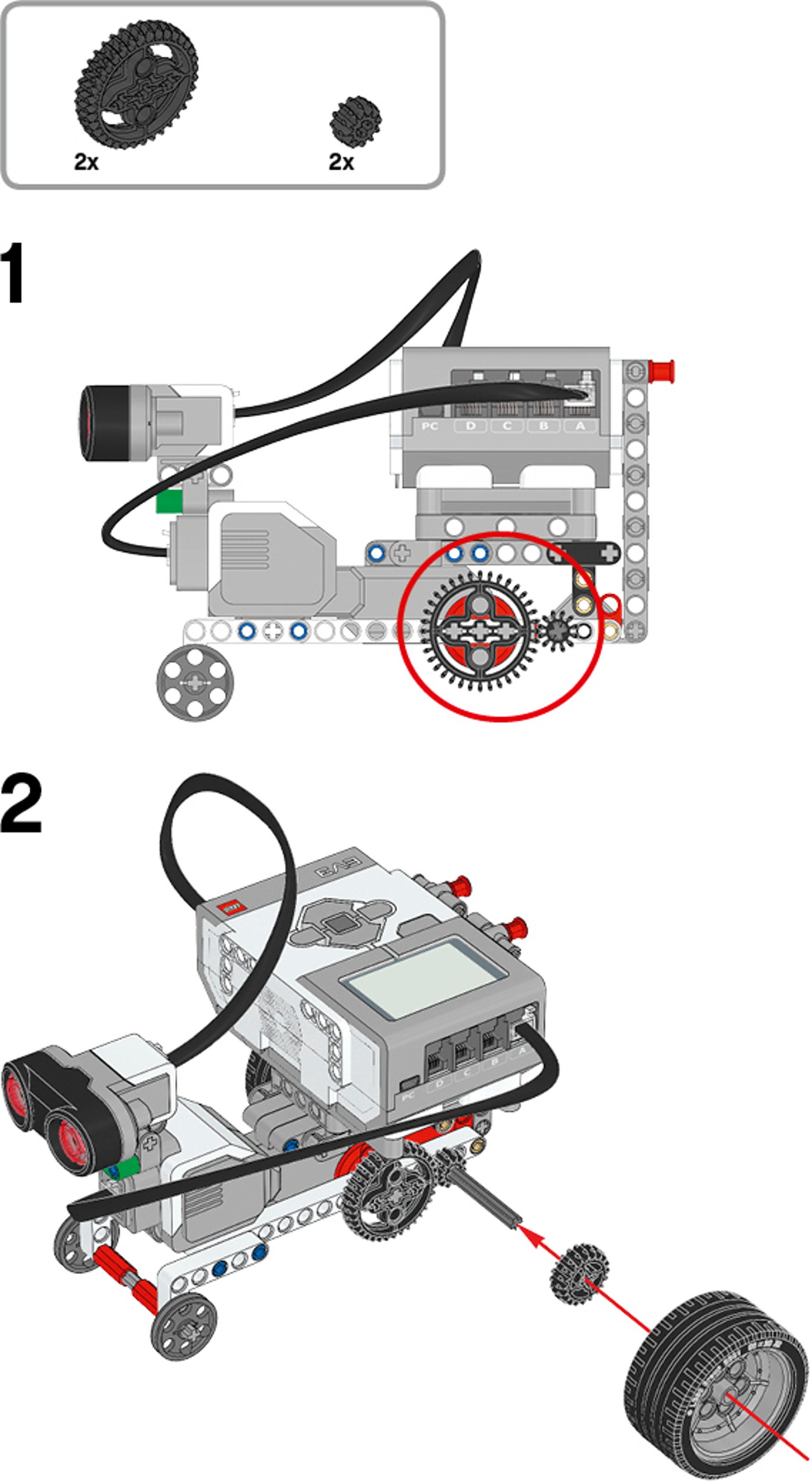
Build the third gear train using the same gears:

If you have time, use regular gears to build the fourth gear train:
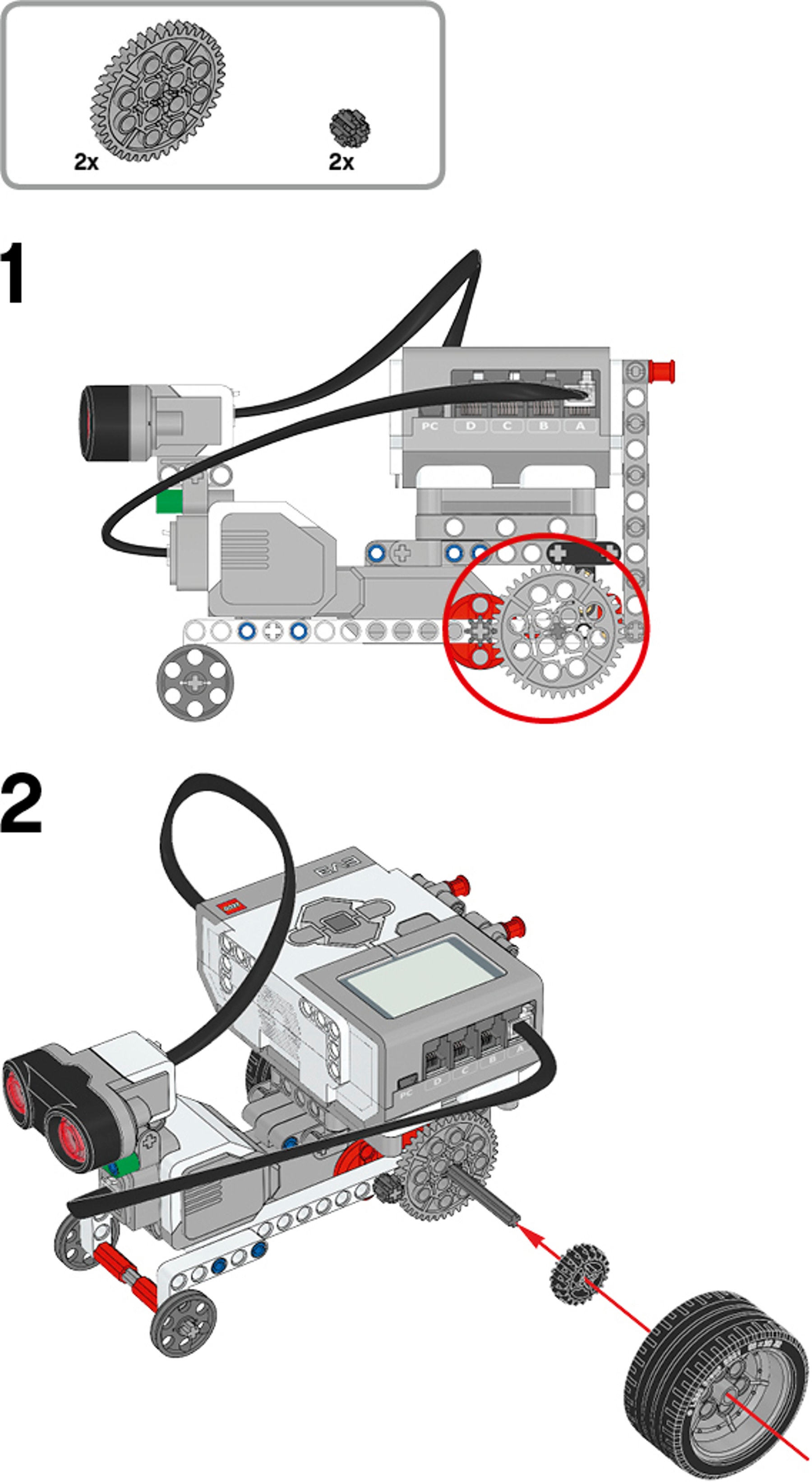
If you have time, build this fifth gear train using the same gears:
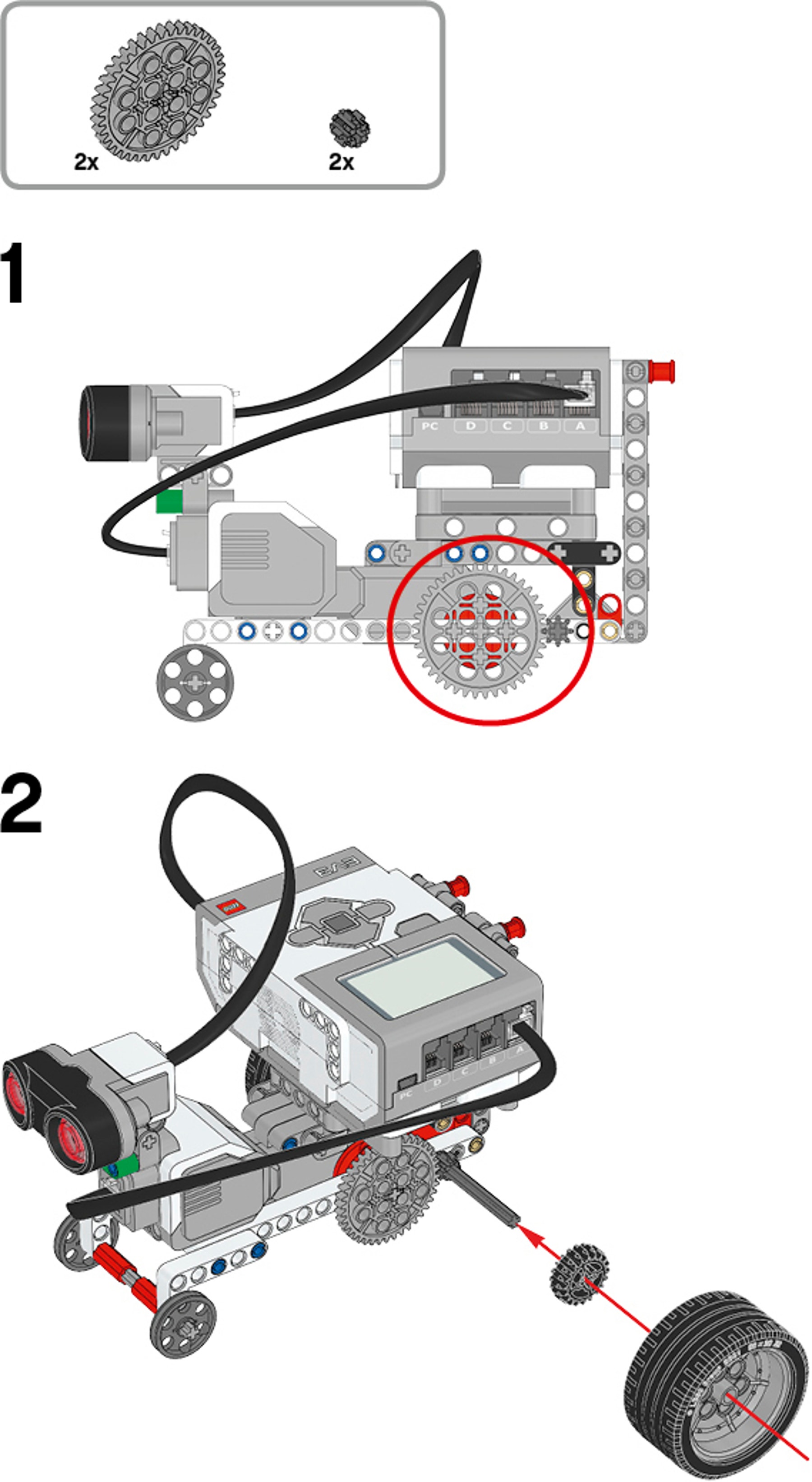
Summarize your results.

Use the average values for each gear train option to analyze how the gear ratio relates to the distance traveled and the vehicle’s velocity.
Which gear ratio would you choose when designing a fast vehicle and which would you choose when designing a vehicle that needs to move a heavy load?
How did you do?

What did you do well? Is there anything you could’ve done better?
Now you know when to shift gears, that’s great. Full speed ahead to the next lesson!